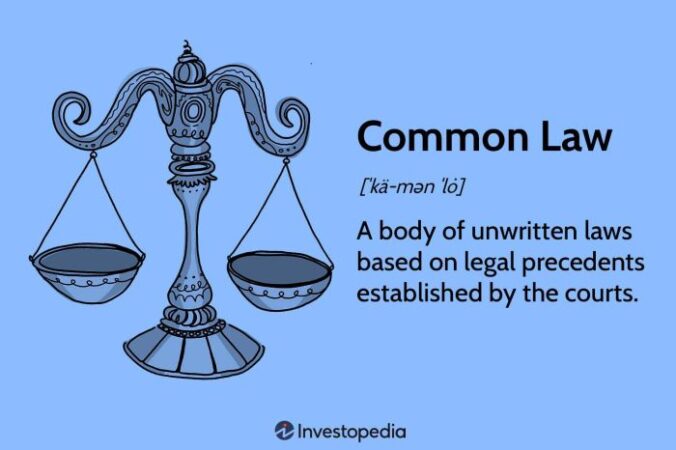
What is tort law? It’s a fascinating area of law that deals with civil wrongs, those actions that cause harm to others. Tort law aims to protect individuals from harm and ensure they receive compensation for injuries caused by the wrongful actions of others. Imagine a world without this legal framework; it would be a chaotic landscape where individuals could act with impunity, leaving victims with no recourse. This area of law has evolved over centuries, reflecting societal values and evolving alongside technological advancements. From slip-and-fall accidents to online defamation, tort law touches many aspects of our lives, shaping how we interact with one another and navigate the complexities of modern society.
To understand tort law, we must delve into its core elements, which include the existence of a duty of care, a breach of that duty, and the resulting harm. Tort law categorizes these wrongs into intentional torts, such as assault and battery, and unintentional torts, such as negligence. In addition, we’ll explore the various defenses available to those accused of committing a tort and the remedies available to victims, such as monetary damages and injunctive relief. By understanding the principles of tort law, we gain a deeper appreciation for the intricate web of legal protections that safeguard our rights and ensure accountability for wrongful actions.
Elements of a Tort

To establish liability for a tort, a plaintiff must prove certain elements. These elements vary depending on the specific tort, but generally include the following:
Duty of Care
A duty of care is a legal obligation to act reasonably to avoid causing harm to others. It is a fundamental principle of tort law, forming the basis for many torts. The concept of duty of care is rooted in the idea that individuals have a responsibility to act in a way that does not unreasonably put others at risk.
This duty is not absolute, but rather depends on the relationship between the parties involved. For instance, a doctor has a higher duty of care towards their patients than a stranger on the street. The existence and scope of a duty of care are determined by law, and courts have developed specific rules for different situations.
Here are some examples of duty of care in different torts:
- Negligence: In negligence, the duty of care is to act reasonably to avoid causing harm to others. This means taking reasonable steps to prevent foreseeable risks. For example, a homeowner has a duty of care to ensure their property is safe for visitors and to warn them of any known hazards.
- Product Liability: Manufacturers have a duty of care to design, manufacture, and market products that are safe for consumers. This duty extends to all foreseeable uses of the product, including those not intended by the manufacturer.
- Trespass: While a property owner generally has a duty of care to prevent trespass, there are exceptions. For instance, a property owner may not be liable for injuries sustained by a trespasser unless they were intentionally caused or the owner knew of the trespasser’s presence and failed to warn them of a dangerous condition.
Types of Torts: What Is Tort Law
Torts are civil wrongs that result in harm to another person. They can be categorized into two main types: intentional torts and unintentional torts.
Intentional torts occur when a person intentionally commits an act that causes harm to another person. Unintentional torts, on the other hand, occur when a person’s negligence or carelessness results in harm to another person.
Intentional Torts
Intentional torts are civil wrongs that occur when a person intentionally commits an act that causes harm to another person. Examples of intentional torts include:
- Battery: Intentional and harmful or offensive contact with another person. For example, punching someone in the face.
- Assault: Intentional act that causes reasonable apprehension of immediate harmful or offensive contact. For example, threatening someone with a fist.
- False Imprisonment: Intentional confinement or restraint of another person without justification. For example, locking someone in a room against their will.
- Defamation: Publication of false and defamatory statements about another person that damage their reputation. For example, spreading false rumors about someone’s criminal history.
Unintentional Torts (Negligence)
Negligence is an unintentional tort that occurs when a person’s carelessness or negligence results in harm to another person. For negligence to be established, four elements must be proven:
- Duty: The defendant owed a duty of care to the plaintiff. For example, a driver has a duty to drive safely and avoid causing accidents.
- Breach: The defendant breached their duty of care. For example, a driver who speeds and runs a red light breaches their duty of care.
- Causation: The defendant’s breach of duty caused the plaintiff’s injuries. For example, the driver’s speeding and running a red light caused an accident that injured the plaintiff.
- Damages: The plaintiff suffered damages as a result of the defendant’s negligence. For example, the plaintiff incurred medical expenses and lost wages due to the accident.
Strict Liability Torts
Strict liability torts are civil wrongs that occur when a person is held liable for harm caused by their actions, regardless of their intent or negligence. Examples of strict liability torts include:
- Product Liability: Manufacturers and sellers of defective products are held liable for injuries caused by those products, regardless of whether they were negligent. For example, a manufacturer of a car with a faulty brake system can be held liable for injuries caused by a car accident.
- Animal Liability: Owners of animals are held liable for injuries caused by their animals, even if they were not negligent. For example, a dog owner can be held liable for injuries caused by their dog, even if they were not aware of the dog’s aggressive tendencies.
Defenses to Tort Claims

Even when a plaintiff successfully proves that a defendant committed a tort, the defendant may still avoid liability if they can establish a valid defense. These defenses aim to negate the plaintiff’s claim or reduce the amount of damages awarded.
Contributory Negligence, Comparative Negligence, and Assumption of Risk
These defenses involve situations where the plaintiff’s own actions contributed to their injuries.
- Contributory Negligence: This defense completely bars a plaintiff from recovering damages if they were even slightly negligent in causing their own injuries. This defense is less commonly used today, as it is seen as too harsh.
- Comparative Negligence: This defense allows the court to apportion fault between the plaintiff and the defendant. The plaintiff’s damages are reduced proportionally to their degree of negligence. For example, if the plaintiff is found to be 20% responsible for their injuries, they will only be able to recover 80% of their damages.
- Assumption of Risk: This defense applies when the plaintiff voluntarily and knowingly assumed the risk of harm. For example, a person who participates in a dangerous sport, such as skydiving, is generally considered to have assumed the risk of injury.
Immunity
Certain individuals or entities may have legal immunity from tort claims, meaning they cannot be sued for certain actions. This immunity is often based on public policy considerations.
- Governmental Immunity: This immunity protects government entities and their employees from liability for certain actions taken in the course of their official duties. For example, a police officer may be immune from liability for using excessive force if they acted reasonably under the circumstances.
- Charitable Immunity: This immunity traditionally protected charitable organizations from liability for torts committed by their employees or volunteers. However, this immunity has been significantly eroded in many jurisdictions.
- Spousal Immunity: This immunity historically prevented spouses from suing each other for torts. This immunity has largely been abolished in the United States.
Specific Defenses to Different Types of Torts
Defenses to tort claims vary depending on the specific type of tort alleged.
- Negligence: In negligence cases, common defenses include contributory negligence, comparative negligence, assumption of risk, and the “sudden emergency doctrine,” which recognizes that people may act differently in emergency situations.
- Intentional Torts: Defenses to intentional torts often involve challenging the plaintiff’s claim of intent or demonstrating that the defendant’s actions were justified. For example, a defendant accused of battery may claim self-defense or defense of others.
- Strict Liability: Defenses to strict liability claims typically focus on proving that the defendant did not cause the harm or that the plaintiff’s injuries were not caused by the defective product or activity.
Remedies for Tort Claims
When a person is found liable for a tort, the court must decide how to remedy the harm caused. The purpose of remedies is to compensate the injured party for their losses and to deter future wrongdoing.
Types of Remedies
The court can order different types of remedies, depending on the specific circumstances of the case. These include:
- Monetary Damages: This is the most common type of remedy in tort cases. Monetary damages are awarded to compensate the injured party for their losses, such as medical expenses, lost wages, pain and suffering, and emotional distress.
- Injunctive Relief: Injunctive relief is a court order that prohibits a person from doing something or requires them to do something. This type of remedy is often used in cases involving ongoing torts, such as nuisance or trespass. For example, a court might issue an injunction to stop a neighbor from playing loud music at night.
- Declaratory Judgments: A declaratory judgment is a court order that clarifies the legal rights and obligations of the parties involved in a case. This type of remedy is often used to resolve disputes over the interpretation of a contract or a statute. For example, a court might issue a declaratory judgment to determine whether a particular activity is legal or illegal.
Determining the Amount of Damages, What is tort law
When awarding monetary damages, courts consider several factors, including:
- The nature and extent of the plaintiff’s injuries: This includes both physical and emotional injuries.
- The plaintiff’s medical expenses: This includes past, present, and future medical expenses.
- The plaintiff’s lost wages: This includes past, present, and future lost wages.
- The plaintiff’s pain and suffering: This is a subjective assessment of the plaintiff’s physical and emotional pain.
- The plaintiff’s emotional distress: This includes things like anxiety, depression, and post-traumatic stress disorder.
- The defendant’s ability to pay: Courts will consider the defendant’s financial resources when determining the amount of damages to award.
Examples of Remedies in Tort Cases
- Personal Injury: In a personal injury case, the court might award monetary damages to cover the plaintiff’s medical expenses, lost wages, pain and suffering, and emotional distress.
- Defamation: In a defamation case, the court might award monetary damages to compensate the plaintiff for the harm to their reputation.
- Trespass: In a trespass case, the court might issue an injunction to stop the defendant from trespassing on the plaintiff’s property.
- Nuisance: In a nuisance case, the court might issue an injunction to stop the defendant from engaging in activities that are causing a nuisance to the plaintiff.
Tort Law in Modern Society
Tort law plays a crucial role in modern society by establishing a framework for individuals to seek compensation for harm caused by the wrongful acts of others. It serves as a vital mechanism for protecting individual rights, promoting social justice, and deterring harmful behavior.
The Role of Tort Law in Protecting Individual Rights and Promoting Social Justice
Tort law acts as a safeguard for individual rights by providing legal recourse for those who have been wronged. It ensures that individuals can seek compensation for injuries, losses, and damages caused by the negligence, intentional misconduct, or strict liability of others. For instance, a person who is injured in a car accident due to another driver’s negligence can file a tort claim to recover damages for medical expenses, lost wages, and pain and suffering. This principle of holding wrongdoers accountable for their actions fosters a sense of fairness and promotes social justice.
Conclusive Thoughts

Tort law plays a vital role in our society, providing a framework for addressing civil wrongs and ensuring that victims receive justice. From protecting individuals from harm to fostering a culture of accountability, this area of law is essential for maintaining a just and equitable society. As technology continues to evolve and new challenges arise, tort law will undoubtedly continue to adapt, ensuring that it remains relevant and effective in addressing the legal issues of the 21st century. Understanding the principles of tort law empowers individuals to navigate the complexities of modern society, protecting their rights and ensuring they have the means to seek redress for any wrongs they may suffer.
Essential Questionnaire
What is the difference between a tort and a crime?
A tort is a civil wrong, while a crime is a public wrong. Torts are typically resolved through lawsuits, with the goal of obtaining compensation for the victim. Crimes are prosecuted by the government, with the goal of punishing the offender.
Can I sue someone for emotional distress?
Yes, in some cases, you can sue for emotional distress. However, you must demonstrate that the emotional distress was caused by the defendant’s wrongful actions and that it was severe enough to be considered a recognized psychological injury.
What is the statute of limitations for filing a tort claim?
The statute of limitations varies depending on the type of tort and the jurisdiction. It is important to consult with an attorney to determine the applicable statute of limitations for your specific case.




